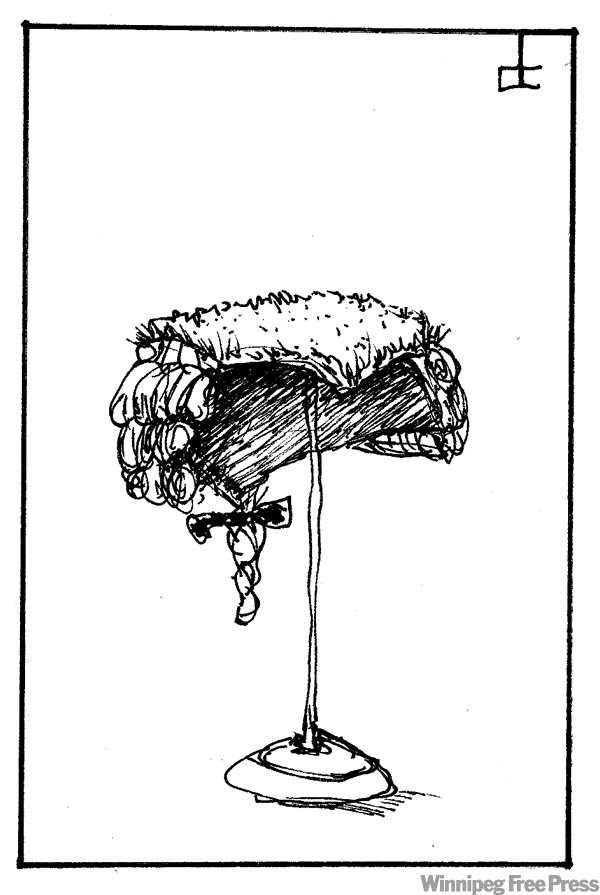Learn from Grenier
Advertisement
Read this article for free:
or
Already have an account? Log in here »
To continue reading, please subscribe:
Monthly Digital Subscription
$0 for the first 4 weeks*
- Enjoy unlimited reading on winnipegfreepress.com
- Read the E-Edition, our digital replica newspaper
- Access News Break, our award-winning app
- Play interactive puzzles
*No charge for 4 weeks then price increases to the regular rate of $19.00 plus GST every four weeks. Offer available to new and qualified returning subscribers only. Cancel any time.
Monthly Digital Subscription
$4.75/week*
- Enjoy unlimited reading on winnipegfreepress.com
- Read the E-Edition, our digital replica newspaper
- Access News Break, our award-winning app
- Play interactive puzzles
*Billed as $19 plus GST every four weeks. Cancel any time.
To continue reading, please subscribe:
Add Free Press access to your Brandon Sun subscription for only an additional
$1 for the first 4 weeks*
*Your next subscription payment will increase by $1.00 and you will be charged $16.99 plus GST for four weeks. After four weeks, your payment will increase to $23.99 plus GST every four weeks.
Read unlimited articles for free today:
or
Already have an account? Log in here »
Hey there, time traveller!
This article was published 13/03/2009 (6119 days ago), so information in it may no longer be current.
In the justice system, one person’s relief brings another’s misery, and so it is with the overturning Wednesday of Kyle Unger’s 1992 murder conviction. Brigitte Grenier’s family is suffering once again.
The 16-year-old was sexually assaulted, mutilated, beaten and strangled at a music concert in Roseisle in 1990. Her family has since lived through the trial of two men — Mr. Unger and his co-accused, Timothy Houlahan — and then saw both men released on bail. Mr. Houlahan killed himself while out on bail. Mr. Unger spent 14 years in jail until he was granted bail in 2005 when DNA testing of the single strand of hair found on Grenier proved it did not belong to him. It was the only piece of physical evidence against him. This week, the federal justice minister overturned the murder conviction, calling for a new trial.
That decision will rest upon the strength of the case, as it is today, against Mr. Unger. It seems unlikely the provincial Justice department will send the matter to court again. In addition to discredited evidence — the hair-comparison analysis and the so-called confession enticed from him during an RCMP sting operation — the testimony of a jailhouse informant would not meet today’s standards for use in court. And Mr. Unger’s lawyers are also arguing their client’s defence would have been bolstered had they been told of evidence concerning Mr. Houlahan. It was not used in court and not disclosed to the defence.

As it stands, no one is being held responsible for Ms. Grenier’s heinous slaying. Further, one man has paid, through an apparent wrongful conviction, for the crime with 14 years of his life in prison.
Who is to account? Unlike in the wrongful murder convictions of Thomas Sophonow and James Driskell, no inquiry has been called into this miscarriage of justice. Barring a new trial, it is appropriate (as argued on the page opposite by David Asper) that the Manitoba prosecutions branch should withdraw the charge against Mr. Unger, or seek a motion for acquittal in court. Otherwise, Mr. Unger will remain under a cloud of doubt and suspicion.
There is another potential avenue for accountability. There must be completion of an external review launched in 2007 of cases handled by George Dangerfield, the former senior prosecutor. Mr. Dangerfield acted on the cases of Sophonow, Driskell and Unger. A common theme that runs through these miscarriages was the use by the prosecution of faulty hair-comparison evidence, the non-disclosure of evidence to the defence and/or the use of unreliable witnesses who brokered deals with, or payment from, the Justice department.
That external review, undertaken by Roger Salhany, of cases in which a claim of wrongful conviction was made was subsequently restricted to only those cases involving claims of non-disclosure. Mr. Unger’s discredited conviction indicates that strict framing of the case review’s terms was a mistake. It should now be expanded to other grounds on which miscarriage is alleged.



